
Miscellanea
`A physical experiment which
makes a bang is always worth more than a quiet one!` Georg
Christoph Lichtenberg.
Some inventions are unique, others develop over time and prove impossible to attribute to one person and some are paralleled in different places at the same time. Needless to say various nations defend their particular person as being the one, supreme and unique inventor or discoverer. Perhaps as human beings we ought to grow up enough to realise that whoever did what and when somewhere on this planet it was as a fellow human being.
You may like to decide which of the following are inventions and which are discoveries. In the latter case the old, old world keeps turning unchanged whether we discover these things or not - in the case of inventions...
We are as dwarfs mounted on the shoulders of giants so that we perceive many more things than they, it is not because our vision is more piercing or our stature higher, but because we are carried and elevated higher thanks to their gigantic size.
Bernard of Chartres
Amber - a fossil resin often found on the sea-shore. It was once thought to be the tears of a goddess or frozen Sunlight. The Greek name was - electron - from which came our words - electron & electricity. When rubbed it was found to attract fluff, hair clippings & dried leaves (PLINY 70AD).

Thales of
Miletus
- 600BC gave
details of experiments with amber and natural magnets (Magnetite/Lodestone ) .
He and ANAXAGORAS thought that amber had a soul. THEOPHRASTUS 32BC also
experimented with amber.
Magnetite - Lodestone -Loadstone - an iron-ore Fe3 O4 - naturally magnetic - named from MAGNESIA in Lydia - called Lapis Heracleus from Heraclea the capital of Magnesia. Mentioned by PLINY, HOMER, PYTHAGORAS, ARISTOTLE, as having miraculous properties. HIPPOCRATES (Father of Medicine) prescribed it as a purgative. THALES & ANAXOGORAS thought it had a soul.

Frode - the Icelandic historian 1068AD recorded the use of the magnetic needle
for navigation.
Chinese
- mention made
of a magnetic device for navigation c200AD.
Flavio Gioia - Dor
Hesselgrave informed me (Nov 2000) that in the town square in Amalfi, Italy is a
plaque commemorating the inventor of the magnetic compass - Florio Gioia - in
about 850AD.
Dr. Robert Norton - invented the magnetic dip needle in 1576AD.
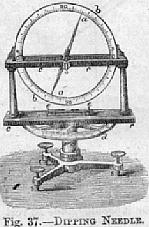
Electroscope - from Greek elektron (amber) and skopeo (I view).
Electrometer
- In his book, ` New
Experiments in Electricity, wherein the causes of thunder and lightning are
explained...` and in various papers to the Royal Society, the Rev. Abraham
Bennet F.R.S. (1749 - 1799) Curate of Wirksworth Derbyshire, described his
invention of the gold leaf electrometer. The invention arose in part from a
suggestion made by Erasmus Darwin. Bennet also devised his Doubler for
magnifying small amounts of electrical charge as for example his discovery of
contact electrification between metals. (One of the subscribers to Bennet`s book
was Volta who advanced contact electrification investigations and invented the
first battery of cells.) Bennet investigated charging from blown dusts and
evaporation of liquids and recorded daily weather conditions and atmospheric
electricity.
Otto von
Guericke
- (1602-86)
Mayor of Magdeburg, Germany, (devised Magdeburg Spheres experiment) invented the
first electrostatic generating machine (1663) which used a ball of sulphur
rubbed by hand.
Sir Isaac Newton - demonstrated the value of glass for use as a material in generating electrostatic charge by rubbing. (Previously glass was regarded as untrustworthy since sometimes a charge could be produced whereas at other times there was little or none. This is due to the condensation of moisture on to a cold glass surface, often combined with dirt, which enabled charge to leak away.)
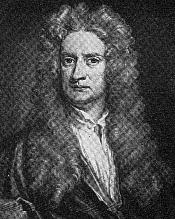
Hauksbee -
in 1709 improved von Guericke`s machine by replacing the
sulphur ball with a glass globe.
Wilcke
- in 1762 invented a simple generator later modified by ALESSANDRO VOLTA
(1745-1827) and called the electrophorous.
Electrophorous - VOLTA - from Greek phoros (carrier)
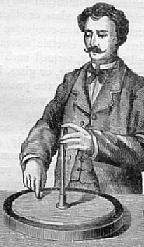
Ewald Jurgen von Kleist - (1746) cathedral dean at Cammin, Pomerania, invented the first capacitor called a Leyden Jar due to simultaneous invention by CUNAEUS and VAN MUSSCHENBROEK, at the University of Leyden.
Von Kleist was probably the first person to carry an electric
light from one place to another when he charged a metal spike inside a closed
jar. He observed a glow at the tip of the metal and carried the jar from one
room to another.
Pyro-electricity -
Greek pyr (fire) - certain mineral crystals e.g. Tourmaline
become electrically charged when heated.
Piezo-electricity - Greek piezein (to press)
- certain crystals e.g. Quartz when mechanically squeezed along one axis will
generate electricity when relaxed. This effect is used in generating accurate
streams of pulses to drive clocks and watches and maintain transmitters and
receivers of fixed frequencies.
Piezo-electric
Ceramics
- the piezo-electric effect has been engineered
into ceramic materials - to generate e.g. sparks for gas ignition.
Compass
- Latin cum
(with) passus (a step) - a 15th - 16th century compass was
a small pocket sundial the gnomon of which was aligned by means of a magnetic
needle. The name passed over to the magnetic needle and its card.
Magnetic North
Pole - discovered by James Clark
Ross June 1st 1831.
Magnetic South
Pole - discovered by Professor
David, Shackleton expedition 1909.
Anode
- Greek (way
in)
Cathode - Greek (way out)
Galvanometer - detects an electric
current by its magnetic effect - name invented by POGGENDORFF (1796 - 1877) to
honour GALVANI (1737-98) who in fact was unaware of the magnetic
effect.
Electrolysis of water - into Hydrogen and Oxygen
by Nicholson & Carlyle 1800AD.
Electrolysis of Copper Sulphate - by Johann W. Ritter of Jena 1800AD.
Solenoid - Greek solen (tube) Name solenoid given by AMPERE
in 1822AD.
Peter
Roget - (1779-1869) - physician- devised his jumping spiral of wire which
demonstrates the compression of coils on
a loose spiral of wire due to its magnetic field.
J.P.Wagner - (1799-1879) invented the automatic electromagnetic
contact breaker in 1837AD at Frankfort on Main. Called WAGNER`S HAMMER it has to
be heard to know why!
Electric
Bell - trembling bell using Wagner`s Hammer - invented by John Mirand in 1850AD.
Telegraph - Greek tele (distant) graphein (write).
Electric
Telegraph
- invented in 1833AD by WILHELM EDWARD WEBER
(1804-91) and KARL FRIEDRICH GAUSS (1777-1855).
Georg
Simon Ohm -
born Erlangen 1787 died Munich 1854 - proposed law relating
voltage and current to resistance in 1827 -consequently exposed to ridicule or
ignored. Needless to say his law is a fundamental one in electrical theory and
technology -OHM`S LAW.
Rheostat - Greek rheo (I flow) A variable resistor invented
by WHEATSTONE.
Joule`s
Law - relating interchange of energy 1841AD.
Carbon
Filament Lamp -
Hanoverian teacher HEINRICH GOEBEL - 1855AD an immigrant to
New York devised them to light his watchmakers shop. JOSEPH SWANN demonstrated
his filament lamp in Newcastle on Tyne, England, in Summer 1879AD. THOMAS ALVA
EDISON demonstrated his late in 1879.
Osmium
Filament Lamp -
probably the first metal filament lamp due to the high
melting point of Osmium. Invented in 1898AD by AUER von WELSBACH (Vienna
1858-1929) -he also invented the incandescent gas mantle.
John
Athanase Peltier -
(1785-1845) discovered the thermo-electric effect in which
electricity is generated at the junction of two dissimilar metals when the
junction is heated.
Accumulator - a cell or battery of cells in which chemical
action may be reversed to recharge the device - invented by SINSTEDEN in 1854AD
- improved by R. GASTON PLANTE (1834-89) using lead plates - improved to modern,
car battery form, by CAMILLE FAURE 1881 AD using lead oxide and sulphuric
acid.
Humphry Davy - (Penzance, Cornwall 1778-1829) Used electrolysis to produce Sodium and Potassium in 1807AD. Discovered the electric arc - initially, between horizontal carbon cylinders - the shape of the discharge led to its being called an arc.
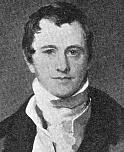
Eugen
Goldtsein -
(Gleiwitz 1850-1931) named CATHODE RAYS in 1876.
Georg
Christoph Lichtenberg - (Darmstadt 1744-99) Electrical physicist, satirist.
Used a large ELECTROPHORUS to produce the beautiful surface discharges we now
call Lichtenberg`s Figures. These had been seen on the skin of lightning victims
and, our imaginations being what they are, just as people `see` images in clouds
so they saw the local scenery in the discharge pattern on the victim`s skin -
they were called Lightning Flowers.
Carbon
Arc Lamp -
1812 a battery of 2,000 cells established an arc 4" (10cm
approx) long. The first arcs used for public lighting were called JABLOCHOFF
CANDLES after their inventor (1876AD).
Mercury
Vapour Lamp -
1892AD invented by LEO ARONS (1860-1919).
E.H.Hall
- in 1855AD discovered that a potential difference is established on a
conducting surface by a magnetic field - the HALL EFFECT- now used in some
semi-conductors.
Michael Faraday - among his over 3,000 experiments in electricity and magnetism he discovered that a magnetic field will produce an electric current in a conductor (1831AD) and so established the basic principle of power generation.
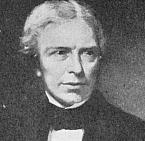
H.F.E.
Lenz - (1804-65) discovered a magnetic field in a solenoid carrying an electric
current will oppose the current flow -LENZ`S LAW.
Hans Oersted - used to set up a compass needle underneath a wire and pass a current through the wire to demonstrate there was no link between electric current and magnetism. One day he accidentally or forgetfully, set the compass needle perpendicular to his usual set up and was astounded to see the needle move. Several repeats of this experiment proved the flow of an electric current produces a magnetic field. This established the basic principle of the electric motor effect. Oersted`s friend was HANS CHRISTIAN ANDERSEN.
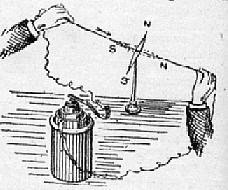
Schweigger - (1779-1857) - found that many turns of wire
amplified the OERSTED effect and devised a sensitive current detecting
Galvanometer the basis of moving coil instruments and loudspeakers. SEEBECK
(1770-1831) named Schweigger`s invention the multiplier.
Telephone - Greek tele (far) phone (sound)
Microphone - Greek mikros (small).
William
Sturgeon -
invented the ELECTROMAGNET in 1825AD.
Joseph Henry - made a far more powerful version of the ELECTROMAGNET in 1830.
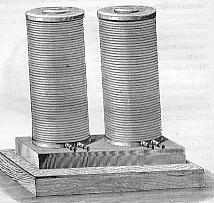
Barkhausen - in 1919AD devised an experiment to electrically
detect the movement of the magnetic domains within a ferromagnetic
material.
Nikola Tesla - (1857-1943) Inventor of alternating current generators, motors and power distribution, gas tube illumination and the famous TESLA COIL.
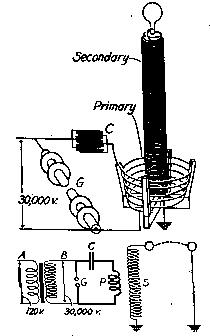
M.H.
Jacobi - (1801-74) brother of mathematician K.S.J. JACOBI .
In 1834AD constructed the FIRST ELECTRIC MOTOR - in 1838AD constructed a motor
of ¾ horsepower which propelled a small boat on the Neva. DR. FERGUSON writing
in 1871 says of the electric motor:- `Powerful machines of this kind have been
made with a view to supplant the steam engine; but such attempts have proved
utter failures. It has been found that zinc (that is in batteries of cells)
cannot compete with coal as a source of mechanical action.` Which demonstrates
that scientists should stick to science and not try prophecy. A polite way of
saying one should learn when to keep ones mouth shut!
Stephen
Gray - (1696-1736) Discovered that materials may be classed as insulators or
conductors -Electricity can be conducted from its source to a distant place. (A
chapter devoted to Gray will follow in due course - I am repeating his
experiments in order to give you a modern version to try for
yourself.)
Henry Cavendish - (1731-1810) The morbidly shy recluse most of whose results were discovered long after his death.
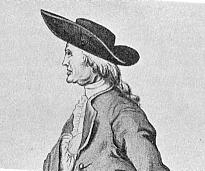
THE ELECTRICAL RESEARCHES OF THE HONOURABLE HENRY CAVENDISH were published by James Clerk Maxwell from the original papers. Amongst other things Cavendish discovered laws relating charge to mechanical force (COULOMB`S LAW) -electric discharges through air produce nitrous and nitric acid; hence he had discovered that lightning produces acid rain which is essential for the ionisation of minerals essential to plant growth - the electric eel uses electricity like that stored in LEYDEN JARS (Cavendish`s battery of Leyden Jars
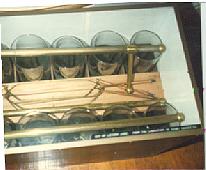
may be seen in Chatsworth House,Derbyshire) - he discovered
HYDROGEN - He used electric sparks in a gaseous mixture of Hydrogen and Oxygen
and proved water was not an element but a compound of H & O. He was perhaps
England`s greatest experimental scientist, cursed by shyness, he is buried in
the family vault in Derby Cathedral with only his coffin brass as his
monument.
George
Green - a somewhat shy man like his hero , Green, at his own expense and in the
brief leisure time he had from working in his father`s windmill, wrote AN
APPLICATION OF MATHEMATICAL ANALYSIS TO THE THEORIES OF ELECTRICITY AND
MAGNETISM in which he laid the foundation of mathematical physics by making
mathematical constructs of the results of the researches of Henry Cavendish
-much as James Clerk Maxwell later did with the research results of Michael
Faraday.
I found in an old visitors book of the
Nottingham Subscription Library at Bromley House, Nottingham, an entry for a
visit by Dr. Farraday of the Royal Institution. Green was a member of this
library and I wondered if the two giants of electricity and magnetism had met on
that occasion. The librarian of the Royal Institution checked Faraday`s
meticulously kept diary but there was no entry for that week. Faraday was away
but where? I like to think in Nottingham and that he and Green met.
William Gilbert - A physician to Elizabeth I -discovered the Earth is a magnet - carried out many careful experiments -collected these and earlier work known in his day into DE MAGNETE.
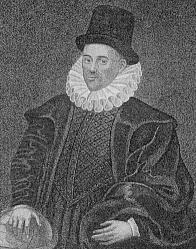
James Clerk Maxwell - he put the mathematical structure to Faraday`s researches in electricity and magnetism. A comparison of electrostatic and electromagnetic units based on the ideas of FOURIER led to his discovery that an electrical effect happens at the speed of light. That light is an electromagnetic wave. Faraday was not a mathematician and whilst he was pleased at his friend`s mathematical work he could not understand it and asked Maxwell when would he write a book to explain the hieroglyphs.
X-Rays - First Discovery of? -In February 1785 William Morgan reported on his investigations to establish that electricity is not conducted through a vacuum. His work was incredibly dangerous, for example he boiled Mercury. He devised a means of exhausting a barometer tube of air. To one end of the tube was attached a wrapping of foil and contact to the other end was via a wire to the mercury in the apparatus. He reported beautiful blue and violet colours as the pressure diminished. As the tube was exhausted he reports,` but the colour of the electric light, which, in air raraified by the exhauster, is always violet or purple, appears in this case of a beautiful green.` At this level of exhaustion and with an extremely high voltage being supplied by his generator the green colour is indicative of the effect of X- radiation on the glass walls of the tube.
*****************************************************************************************************
`At the ball, when the company went out to supper, it had settled around a couple of girls like filings around a magnet.`
Georg Christoph Lichtenberg.